What exactly defines information warfare, and where do we stand within its intricate framework? How do strategic narratives influence the course of military operations? What messages does Russian propaganda embed into Ukraine’s information sphere, and how do the online actions of Ukrainians and Russians differ? These vital issues were discussed in a conversation with The Ukrainian Week, featuring Artem Zakarchenko, head of the public organisation CAT-UA, and analyst Olena Zakarchenko.
CAT-UA was founded on the very first day of the full-scale invasion, February 24, 2022. Initially, a volunteer team dedicated to providing media analysis for military and civilian authorities in Ukraine, the organisation has evolved significantly. Today, its analysts continue to furnish reports on military communications to the country’s military-political leadership. Since its inception, CAT-UA has processed approximately one million social media posts and published around one thousand detailed reports.
Fighting battles on social media
Artem Zakarchenko: In essence, information warfare closely parallels the dynamics observed on the battlefield. Initially, Russia exhibited a profound misunderstanding of the realities on the ground, operating under the delusion that they would be welcomed with flowers in Ukraine. Their messaging strategy in the information sphere reflected this naiveté, disseminating narratives that Ukrainians simply rejected. In stark contrast, Ukraine demonstrated remarkable unity: citizens flocked to recruitment centres and rushed to the front lines, displaying a collective spirit that was both creative and innovative within the information landscape.
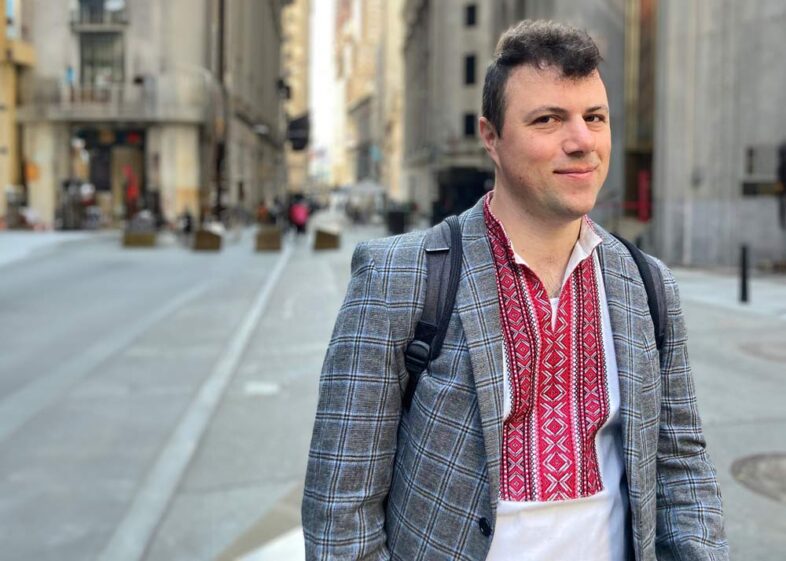
However, by the end of 2022, we encountered a significant crisis. The turbulence in the information space coincided with the challenging circumstances on the front lines, particularly during the fierce battles for Bakhmut. On one front, discontent with the government began to surface, while on another, infighting emerged. This was compounded by an artificially heightened emphasis on the counteroffensive narrative, which initially bolstered morale but ultimately resulted in widespread disillusionment.
Russians grappled with similar challenges, notably the upheaval surrounding Prigozhin and a burgeoning distrust in Putin. In Ukraine, however, the erosion of trust in the government intensified, further fueled by corruption scandals and unpopular decisions. Meanwhile, Putin managed to consolidate his position, employing adept PR strategies to orchestrate a formidable election campaign that reinforced public confidence in his leadership. Consequently, we now find ourselves in a considerably more precarious position in the information war than we were in 2022.
Role of strategic narrative in information warfare and on the battlefield
Artem Zakarchenko: The situation in Afghanistan serves as a poignant example: a formidable army, equipped by the Americans to a far greater extent than our forces today, lacked a clear understanding of its purpose. By contrast, the Taliban presented a coherent strategic narrative, a clarity that ultimately facilitated their victory over an adversary with superior numbers.
In the early days of the full-scale invasion, we were driven by a sense of momentum and unity. Now, however, the landscape has become considerably more complex. Initially, the absence of control within the army was not a pressing concern. Recall the chaotic scenes portrayed on social media during the battles in the woods near Irpin, where disorganised units sprang from the trees to engage the enemy. Amidst that disarray, Ukrainians managed to secure notable victories. Today, should similar chaos occur on the front lines, the Russians would undoubtedly seize the opportunity to exploit it.
General Zaluzhny’s decision to endorse several laws aimed at tightening control over the Armed Forces was a judicious one. This measure helps to mitigate chaos and addresses the growing absence of a strategic narrative among Ukrainians.
At the onset of the Russian invasion, the Ukrainian narrative was remarkably clear—an organic creation not from the government but from the citizens, primarily through social media.
The entire fabric of online discourse supported this narrative. Yet, over time, that narrative has begun to fade without a new one emerging in its place. In contrast, the Russians have managed to maintain a robust narrative, which constitutes a significant advantage for them in this ongoing struggle.
The absence of a cohesive strategic narrative has left us without a clear vision for the future, undermining our ability to foster stories that resonate with citizens. Currently, society appears more preoccupied with evading recruitment offices and lamenting power outages than rallying around a collective goal of victory. Compounding this issue is the lack of a narrative surrounding robust Western support as uncertainty looms over the upcoming elections in the United States. There is a pressing demand for clarity, yet few are stepping up to provide it.
This void has led to a cacophony of voices, with numerous experts offering predictions that frequently diverge from reality. The absence of a controlled agenda is troubling, as a well-defined narrative is just as essential as initiative on the battlefield. It is imperative that we construct a new narrative from the ground up. Our organisation is already taking steps to propose a narrative to the government. Recently, we convened a brainstorming session with experts, and we aim to use their insights to lay new foundations for effective communication.
Olena Zakarchenko: Our approach to shaping the narrative is inherently horizontal, involving contributions from both the government and civil society. The narrative surrounding the counteroffensive, for instance, originated from the government, and there was a prolonged period during which we awaited weapon deliveries—a topic extensively discussed on social media. This narrative gained traction, even resonating in Russia, where concerns about a potential Ukrainian offensive prevailed for some time. Interestingly, even after it became evident that the counteroffensive had not met expectations, many Ukrainians continued to endorse this narrative.
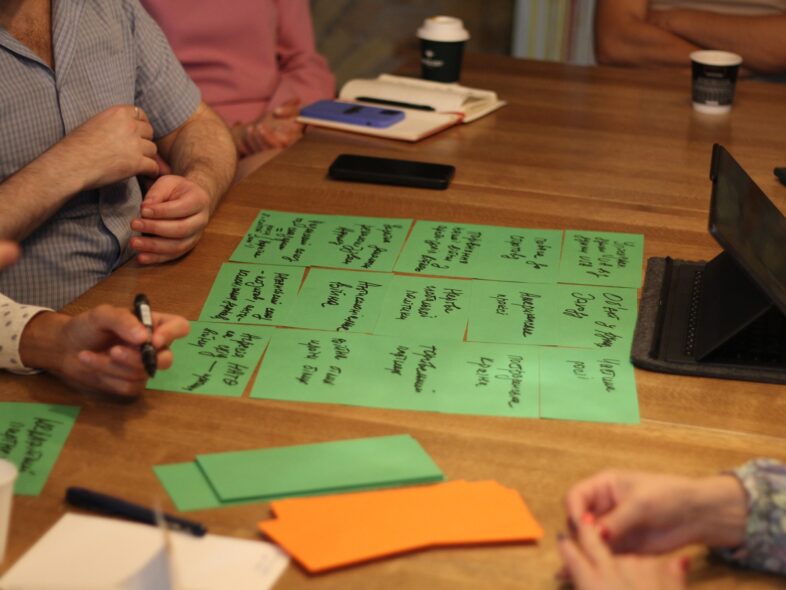
Source: CAT UA | Facebook
Ukrainians and their national narrative
Artem Zakarchenko: The national narrative underpins the strategic narrative in Ukraine. While most countries typically operate with one or two national narratives, Ukraine’s landscape in 2013 featured five distinct visions for its future, of which only three endure today.
Recent studies indicate that Ukrainians resonate with multiple narratives: the revival of Ukrainian culture, civic unity, and multiculturalism. This has resulted in a divide between two contrasting viewpoints, with each camp viewing the other as an internal adversary. One faction advocates for a monocultural state, while the other embraces a multicultural identity. However, a compelling narrative has emerged that seeks to bridge this divide, positing that there are no internal enemies, only an external one—Russia. Proponents argue that defenders of Ukraine, regardless of their language or cultural preferences, should prioritise imparting the Ukrainian language and culture to future generations. This narrative has the potential to integrate the earlier perspectives gradually.
Moreover, Russia’s aggression has heightened the impetus for Ukrainian unity, with the war fostering a collective vision of how Ukrainians aspire to live and the values they should embrace moving forward.
Today, representatives of all three narratives are present across Ukraine’s diverse regions and generations. This convergence is particularly notable in the shift among proponents of the “revival of Ukrainian culture,” who now emphasise monoculturalism over monoethnicity. This evolution signifies an openness to integrating individuals from various backgrounds, provided they learn the Ukrainian language and history.
In the past, advocates of other narratives frequently defended the right to communicate in Russian. However, the current landscape has transformed dramatically. The Ukrainian language has emerged as a pivotal unifying element, facilitating the construction of a strategic narrative grounded in the national narrative amid the ongoing conflict. This newfound understanding simplifies our efforts to forge a cohesive narrative that resonates nationwide.
Russians and their national narrative
Artem Zakarchenko: At the onset of the war, the Russian narrative was marked by chaos and a stark disconnect from reality. Contrary to expectations, Ukrainians did not greet the invaders with flowers. However, since then, Russia has managed to establish a more coherent narrative. The portrayal of Putin as the “bunker grandpa” has been replaced by an emphasis on the Russian soldier as a spiritually elevated, future elite. Regardless of its alignment with reality, this narrative is aggressively disseminated across all media platforms. Moreover, expectations of a broader conflict with the West have been amplified, framing the war in Ukraine as merely a temporary phase with no strategic objectives.
Olena Zakarchenko: Nevertheless, the core tenets of the Russian narrative have not undergone significant change since the full-scale invasion began. The primary messages propagated at the outset continue to resonate today. Moreover, the Russians frequently exhibit contradictions. Initially, they insisted they were not targeting civilians, yet warned that a lack of floral greetings would lead to destruction. They described the Ukrainian army as weak while simultaneously portraying it as overrun with nationalists and bandits. This duality persists. The recent assassination of Farion was met with a similarly contradictory narrative: while Russians claimed it was executed by Ukrainians, they simultaneously lauded it as a successful operation by their FSB.
The reality is that communication in Russia is far more state-controlled than in Ukraine, enabling rapid responses to emerging challenges.
When the initial narrative of being greeted with flowers faltered, they quickly pivoted to a new concept—the “victory grandmother,” a figure purportedly confronting Ukrainian soldiers with a red flag. However, when this narrative failed to resonate even among their own populace, it was swiftly abandoned. In contrast, Ukraine tends to hold onto narratives long after they have lost relevance.
Presently, Russian propaganda is vigorously promoting the notion of a robust underground movement operating within Ukraine. They have introduced a so-called “subversive agent,” Lebedev, who comments on missile strikes and the purported activities of a partisan network. Incidents of arson against vehicles in Ukraine are framed as evidence of a significant underground operation, reinforcing the narrative that many Ukrainians wish to be part of Russia, as they claim to be “one people.”
The initial message propagated at the onset of the invasion—that “Ukrainians are waiting for us because they are Russians”—has now evolved. It has shifted to a more insidious claim: “Ukrainians are waiting for us, but they are reluctant to voice it openly.”
Simultaneously, the format of “interviews with prisoners” remains prevalent in Russian media. In the early stages of the invasion, there was also a significant interest in interviews with Russian captives in Ukraine. However, as time passed, these interviews became less compelling, often recycling the same narratives, revealing that many captives’ relatives supported the actions of the Russian government.
In contrast, Russian media continues to conduct interviews with Ukrainian prisoners, who convey messages that serve the Kremlin’s interests. Yet, the authenticity of these captives raises questions; a cursory analysis reveals that all Ukrainian prisoners featured have Russian surnames. These interviews are deliberately tailored for a Russian audience, largely unnoticed by Ukrainians themselves.
Moreover, Russia has transformed the narrative surrounding a Ukrainian soldier who surrendered with his tank into a sort of ongoing “series,” providing daily updates to keep his story in the public eye. Initially, the soldier recounts his surrender, subsequently expressing a desire to become Russian. Following this, the Russian Duma formally considers and endorses his statement, culminating in a ceremonial presentation of a passport by President Putin. Ultimately, the soldier concludes with comments on the advantages of being Russian and indicates his intention to enlist in the Russian army. This narrative then evolves, suggesting that his comrades are also surrendering in a similar fashion.
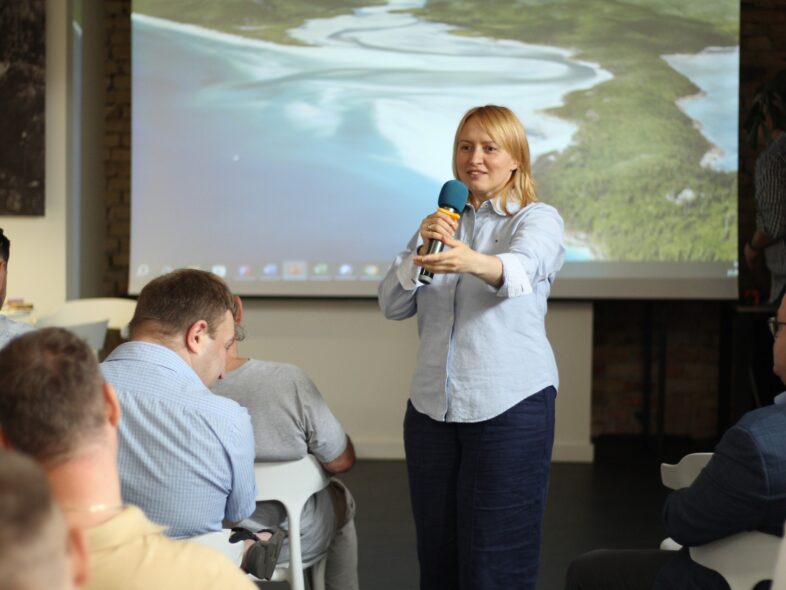
Source: CAT UA | Facebook
Russian security services operating on social media
Artem Zakarchenko: This represents a comprehensive strategic planning model, mirroring the methodologies employed in offensive military operations. Russia operates on multiple levels. Firstly, there are official statements from their military leadership. Secondly, there exists a vibrant ecosystem of military bloggers who can disseminate more extreme narratives. Regrettably, these statements are often closely monitored by Ukrainians. Thirdly, messages are propagated through niche thematic channels within Ukraine, bot networks, and similar platforms. Channels that currently discuss mobilisation may shift to focus on power outages tomorrow, having previously covered topics like the coronavirus. These are versatile platforms, some of which the Security Service of Ukraine has successfully dismantled, yet many remain active.
The informational aspect is intricately linked to events on the ground—when heavy Russian shellings occur and power outages follow, each is deftly exploited by the Russian propaganda machinery. This is a campaign meticulously orchestrated by the Russians, while, unfortunately, we have yet to conceptualise, anticipate, and respond with equal strategic sophistication. Our approach tends to be reactive, addressing immediate challenges rather than formulating a cohesive information defence strategy.
Olena Zakarchenko: The intentions behind Russian propaganda and their social media messaging are strikingly transparent. When they issue threats against energy infrastructure, they typically follow through. Last autumn, for instance, there were no threats aimed at Ukrainian energy assets, and as a result, they refrained from employing energy terror during that period.
Regrettably, our analysts often overlook these dynamics. The then-spokesperson for the Air Force, Ignat, warned of impending missile strikes, causing widespread concern about winter, even while Russian social media remained conspicuously silent on the issue. Now, however, they have resumed their discourse about plans to obliterate Ukraine’s energy generation capabilities, aiming to plunge the country into a complete blackout. They argue that such an assault would cripple logistics and destabilise the entire front, inciting civilian panic that would erode public support for the military effort. The implication is clear: a paralysed Ukraine would be incapable of resisting and would swiftly capitulate.
Even in the event of an unsuccessful attack, Russian social media frames the narrative to suggest that their operations achieved their intended targets. Notably, approximately 60% of their assertions are outright falsehoods, while only about 40% may contain a kernel of truth.
Artem Zakarchenko: There have been notable instances when Ukrainians responded in ways that starkly contradicted enemy expectations. For example, shortly after the shelling of Okhmatdyt on the morning of July 8, 2024, a number of Instagram influencers suggested that President Zelensky should urgently pursue negotiations. However, the overall sentiment among Ukrainians diverged sharply from this perspective, manifesting in a powerful wave of opposition: “What negotiations with the aggressor can be contemplated after this?”
Olena Zakarchenko: Interestingly, the situation following the shelling of Okhmatdyt revealed a remarkable trend that we had not observed before. Typically, after significant attacks that shock the entire nation, negative sentiments tend to dominate social media discourse for an extended period. However, for perhaps the first time after such an event, we witnessed a notable rise in positive sentiments by the end of that day. People came together, discussed mutual aid, and actively participated in clearing the rubble as a collective effort. This phenomenon highlights the resilience of Ukrainian society, capable of absorbing adversity and uniting to navigate challenging circumstances. Despite the absence of a unifying narrative, the outlook is not as dire as it may appear.
Russians and Ukrainians: social media behaviour
Olena Zakarchenko: I was taken aback by the Russian reaction to the murder of Farion, marked by an outpouring of hatred. Recently, a train derailed in Russia, yet Ukrainians did not flood social media with comments proclaiming, “This should happen to every Russian.” We refrained from broadcasting hatred, in stark contrast to the Russians. In every post about Farion’s death, there were calls for the extermination of all Ukrainians. This sentiment was not merely the province of extremist groups; ordinary individuals were expressing such views in Telegram chats. The extent of their animosity towards us is unfathomable.
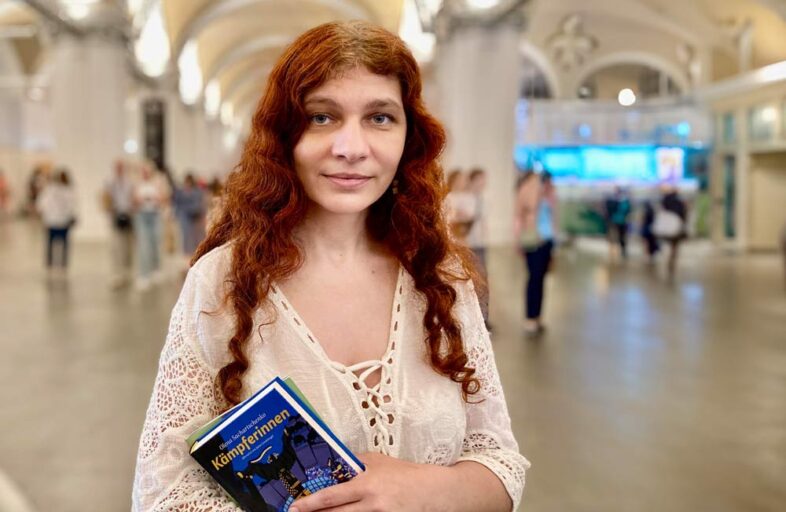
Ukrainians, on social media, exhibit a more genuine demeanour. We lack the notion of “the party says we must.” Conversely, Russians remain reticent, awaiting directives from their leaders. Following Farion’s assassination, Tsarev—a former regional deputy who fled to Russia—initially expressed shock in a post, only to delete it a few hours later and offer an entirely different commentary. Russians adhere closely to the communication cues established by their leadership.
It is crucial to recognise that Russia possesses substantial budgets for its information warfare, a luxury we do not share. Yet, even with these resources, they falter in numerous operations.
At the outset of the invasion, we saw the facade of Russian PR experts, who fancied themselves as global puppeteers, crumble dramatically. Meanwhile, our neighbours have a remarkable ability to appear at the scene of an incident uninvited, subsequently claiming it as their own special operation.
Moreover, recently, there have been fewer “good Russians” publicly sympathising with Ukrainians. They are likely either afraid to do so or no longer believe that words can make a difference. However, there’s an interesting coincidence: alongside the news about Okhmatdyt, information circulated about Russian punishments for traitors who transferred money to the Ukrainian Armed Forces. It seems that there are more so-called “good Russians” quietly sending money to Ukraine without publicising it.
Artem Zakarchenko: During the elections in Russia, opposition-minded individuals were notably active, engaging in discussions about the electoral process and lamenting the absence of genuine choice. However, following the conclusion of the elections, there was a marked decline in anti-war content across Russian social media. It appears that many have lost all hope in the possibility of effective opposition within the country.
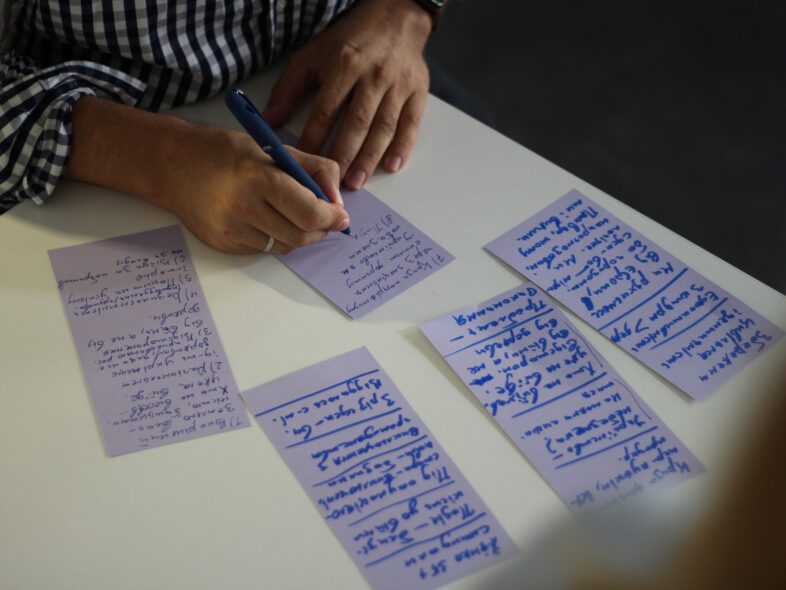
Photo: CAT UA | Facebook
How to avoid falling for fake news and Russian propaganda
Olena Zakarchenko: First and foremost, refrain from attempting to navigate the complexities of Russian propaganda independently. Instead, seek insights from analysts who can adeptly distinguish between genuine information and disinformation campaigns.
Secondly, if you encounter a photo you wish to share, take a moment to review the comments. If the image is fabricated, it is likely that someone will highlight its inauthenticity. Thankfully, numerous organisations, such as the Centre for Countering Disinformation, work diligently to expose falsehoods on a daily basis.
Moreover, a straightforward approach to verifying information across three reputable sources can yield effective results. Prioritise established media outlets over sensationalist gossip sites or dubious regional platforms.
If you find yourself engaged in an online argument, take a moment to review the other person’s profile. If they are blocked or primarily share reposts, it’s likely not worth your time to engage. A quick image search may reveal their photo on various websites, further questioning their credibility. Pay attention to their comments and the content they share; for instance, if they focus solely on “the beautiful Soviet Kyiv we lost” in a group dedicated to vintage photos or express regret over a rift with a “brotherly nation,” it’s a sign to reconsider your interaction. Exercise caution when adding friends; always verify their identities first.
If you inadvertently share misinformation, promptly delete the post to prevent further dissemination.
Artem Zakarchenko: Before clicking share or commenting on a topic, consider whether your actions might serve our enemy’s interests.

